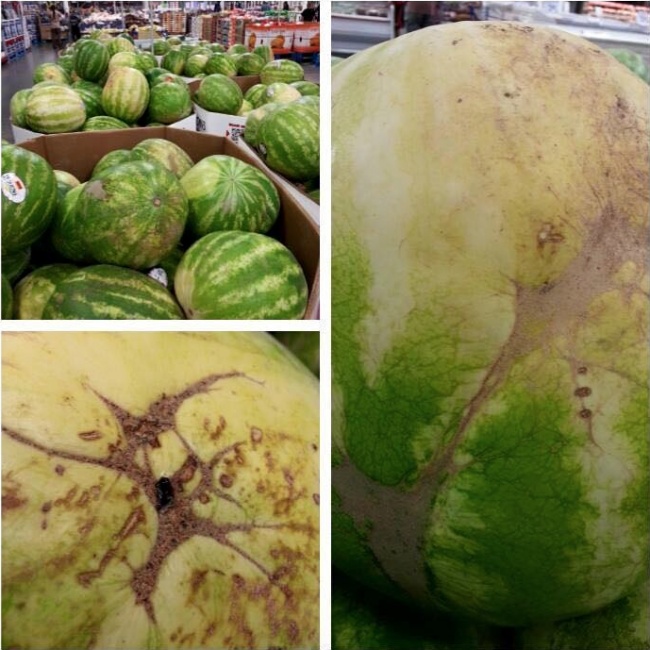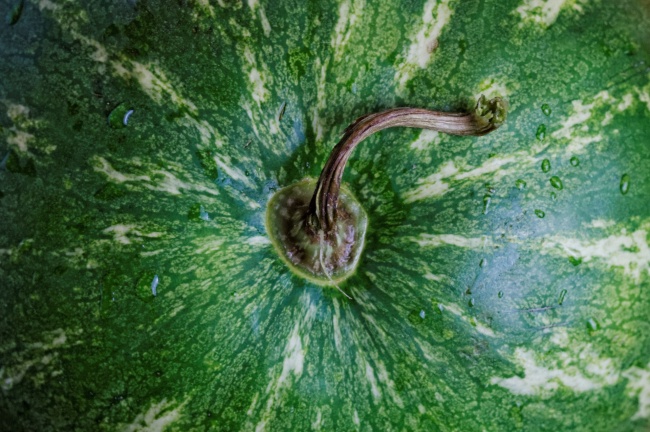How to choose the right watermelon: the tricks that the farmer told me
Watermelon ordinary (Latin Citrullus lanatus) is an annual herbaceous plant, a species of the genus Watermelon (Citrullus) of the family Pumpkin (Cucurbitaceae). Melon culture. Fruit - squash, spherical, oval, flattened or cylindrical; Color of the bark from white and yellow to dark green with a pattern in the form of a grid, stripes, spots; Flesh pink, red, crimson, less often - white and yellow. Tykvina morphologically (in structure) is similar to a berry.
Watermelon ... Everyone loves these huge emerald-pink berries. Sometimes it seems to us that it's very difficult to choose a good specimen and this is only possible, for example, to our grandfather-gardener. But in fact, everything is not so difficult, because the maturity of this striped fetus can be determined without having a trained look and without peeling. We have collected signs that farmers usually determine that the watermelon inside is juicy and tasty.
Chemical composition
The fruit pulp of watermelon contains from 5.5 to 13% of digestible sugars (glucose, fructose and sucrose). At the time of maturation, glucose and fructose prevail, sucrose accumulates during the storage of watermelon. The pulp contains pectins - 0.68%, proteins - 0.7%; Calcium - 14 mg /%, magnesium - 224 mg /%, sodium - 16 mg /%, potassium - 64 mg /%, phosphorus - 7 mg /%, iron in organic form - 1 mg /%; Vitamins - thiamine, riboflavin, niacin, folic acid, carotene - 0.1-0.7 mg /%, ascorbic acid - 0.7-20 mg /%, alkaline substances. In 100 grams of the edible part of the fruit contains 38 kilocalories. Watermelon seeds contain up to 25% fatty oil. Oil of watermelon seeds contains linoleic, linolenic and palmitic acids, by physical and chemical properties it looks like almond oil and can replace it, in taste - on olive oil.
Pharmacological properties
As a medicinal raw material, fruits of ripe watermelon (pulp, crust) and seeds are used. Watermelon has a strong diuretic, choleretic, anti-inflammatory, antipyretic, laxative and fortifying properties. Normalizes metabolic processes, enhances intestinal peristalsis.
On an earth spot

The yellow (otherwise earthy) spot is the place that the watermelon was lying on the ground when it rested. In a mature fetus this spot should be brownish-yellow or even orange-yellow, but not white.
According to the "bee spiderweb"

These are not very beautiful brown spots on the watermelon indicate that the bees often touched the fruit's ovary during pollination. The more often pollination took place, the sweeter the watermelon.
By sex

Among gardeners, the division of the watermelon fruit into "boys" and "girls" is common. "Boys" have a more elongated shape, their taste is somewhat watery. And the "girls" are more round and very sweet.
By weight and volume

It is best not to choose the biggest, but not the smallest watermelon. Optimal - medium. And it should be remembered that a good watermelon is always heavy enough for its size.
By tail

The dried tail always indicates that the watermelon has reached the required degree of maturity. And if the tail is green and fresh, the fruit is not yet ripe.



Comments
When commenting on, remember that the content and tone of your message can hurt the feelings of real people, show respect and tolerance to your interlocutors even if you do not share their opinion, your behavior in the conditions of freedom of expression and anonymity provided by the Internet, changes Not only virtual, but also the real world. All comments are hidden from the index, spam is controlled.